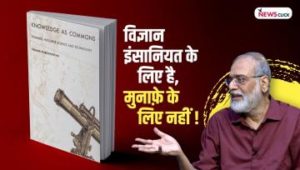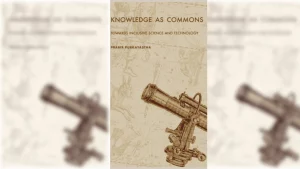
We are holding this discussion in the wake of a deeply disturbing sequence of events at the Hyderabad Central University. It was spurred on by a right-wing anti-Dalit students’ organisation through baseless propaganda, and abetted by the University’s new Vice-Chancellor and two Central Ministers. It led to the suspension of five Dalit students and the tragic suicide of one of them, a brilliant leader of the Ambedkar Students Association, Rohith Vemula. This is not the first, but one in a series of similar incidents that have been happening at the HCU—this is reported to be the eighth suicide of a Dalit student in the University—as well as other institutions of higher learning. Such incidents will continue to happen as long as the oppressive caste system prevails in India: our definitions of class, nation and secularism exclude this harsh reality.
While writing the classic treatise ‘Annihilation of Caste’, Babasaheb Ambedkar knew very well that he was taking on an institution unique to India, with a morbid history of centuries of discrimination, oppression, denial of every human right and violence of the worst kind. The caste system that stratifies Indian society in what seems like a windowless prison has been a greater evil even compared to apartheid. For it also involved untouchability, ritual pollution and a whole complicated mechanism of spatial control; a self-perpetuating hierarchy based on superiority and inferiority on one hand, and on the other, conventions and taboos around everything from dress codes to the use of language. A whole set of supposedly ‘sacred’ texts from Manusmriti to the Bhagavat Gita legitimised the hegemony of the so-called upper castes through myths, metaphysics and cosmologies, saving them from the conflict and guilt racists often feel, as racism has no textual or religious sanction.
All the major theorists of caste, from Maurice Godelier and Gail Omvedt to Uma Chakravarty and Suvira Jaiswal, are agreed on the fact that unlike class, caste is a construct: of the methods of production in the material realm, and of the operations of reproduction in the ideational arena. This is why, unlike class, caste defies and denies the logic of social transformation. Even while framing the Indian Constitution with many special provisions including reservation for the marginalised and criminalisation of the practice of untouchability, Ambedkar must have known that his dream of a genuinely democratic and egalitarian India would meet with overt and covert resistance from those who enjoy the privileges of the system. His advocacy—twenty years after his undelivered talk on the annihilation of caste—of Dalits’ converting to Buddhism as a possible escape from the oppressive Hindu religion must have followed from the sordid realisation, that they have no hope within the Hindu fold, despite Gandhi’s unsuccessful attempts to transform the mindset of the upper castes.
We are living at a time when Ambedkar’s worst fears are proving true. We have before us reports of writers being intimidated into silence, school students being thrashed for unknowingly using plates meant only for the upper cates, Dalit students being asked to sit on separate benches, upper-caste families boycotting educational institutions if they admit Dalit students, Dalit women, even little girls, being raped and burnt to death. As at IIT Madras, organisations for open discussion in institutions of higher learning are being banned directly by the very government duty-bound to protect the constitution. As at HCU, ministers of the central government are explicitly asking that Dalit students be suspended or dismissed for unproven crimes. Teashops in villages are serving tea to Dalits in coconut shells and food on leaves; peasants are being attacked and killed by landlords or their appointed goons, young men and women sentenced by Khap panchayats to lynching or hanging, or forced into suicide, for having found partners from another caste. Houses and whole hamlets are being burnt down and genocides committed across the land from Keelvenmani, Dharmapuri, Melavalavu and Marakkanam in Tamilnadu, or Tsundur in Andhra Pradesh in the South, to Karamchedu, Belchi, Bathani Tola, Laxmanpur Bathe in Bihar, Khairlanji and Javkheda in Maharshtra or Dangawas in Rajasthan in the North. All this besides the ridicule and discrimination Dalits face every day, in schools and colleges, offices and police stations. The ascendancy of the muscular-majoritarian ideology of Hindutva forces, who have always equated Hinduism with Brahminism and its scriptures and strictures, has only worsened the crisis.
One reason for the increase in the pace and degree of attacks on Dalits is evidently the recent assertion of identity, dignity and basic human and constitutional rights by Dalits across the country. This is happening through organisations, journals, social media, and literature; and the beginning, even if very slow, of the emergence of Dalit intellectuals, leaders, educationists, and holders of high office. The upper castes see this as an open challenge to their unquestioned domination of all institutions, which they think of as a birthright. Though Dalits had found their spokesmen: Iyotheedas and Ayyankali, Jyotiba and Savitri Phule, and Ambedkar in earlier times, it was the rise of the Dalit Panther movement, and other regional or countrywide uprisings for Dalit dignity and basic rights, that led to a new awakening, and the new upper-caste aggressiveness consequent upon it. The word Dalit, first used by Ambedkar, began to replace such earlier terms as asprushta (untouchable) or the patronizing harijan in social and political discourse. ‘Dalit’ is a term that marks their position vis-à-vis the upper caste, also linking them to other victims of oppression. The anti-Mandal agitation was the most violent expression of this upper-caste frustration; the 1990s mark a new and bloody turn in India’s shamelessly outrageous anti-Dalit politics.
The emergence of a strong corpus of Dalit literature has to be seen in this context. This literature is important not only because it reflects the state of Dalits in the country, but as a positive assertion of Dalit values. Dalit women writers have forcefully articulated their double oppression. Dalit poets have created their own aesthetic that often goes against the injunctions of traditional Brahmanical poetics, using expressions that used to be dismissed as rustic (gramya) , culturally corrupt (chyutasamskara) or obscene (ashleela), and questioning rules like dhwani (suggestion) and auchitya (propriety). They have brought into poetry a whole new lexicon, rich in community dialects, slang, street language and rarely known usages and sayings. Dalit writers of fiction and autobiography have redrawn the map of Indian literature by discovering and exploring many so far unlit areas of experience. They have also overcome the stagnation that was looming large over many literatures; cleansed and renewed them. They have re-visioned myths and reread the epics from marginalised characters’ perspectives, subverting middle-class notions of poetry and poetic language, forcing the rest of society to look critically at their own traditions and practices, and to reimagine their idea of the nation, and the meaning of freedom and justice.
The present dispensation squarely and shamelessly derives its power from Brahminical, patriarchal ideology, evident in its followers’ practices and the statements of its representatives. But caste is now seen for what it is: institutionalised inequality. Berreman is right when he says that the human meaning of caste, for those who live it, is power and vulnerability, privilege and oppression, honour and degradation, plenty and want, reward and deprivation, security and anxiety. The repressive, alienating, effect of the caste system—the denials of space, wealth, dignity, history and knowledge—is coherently related to the ideological and religious notions associated with Brahminical representations of society. Whereas the Constitution has formally ended caste-based discrimination in public spaces, enforcement remains a dead letter, precisely because the enforcers themselves most often subscribe to caste ideology. Thus, caste remains the fiercest expression of structural violence in Indian society. It is the biggest source of intolerance and discrimination, and the greatest impediment to the attainment of genuine democracy.
Text of a talk delivered at Ambedkar University, Delhi, on January 20, 2016. See here and here for Kannada poet Huchangi Prasad’s presentation at the same event.



